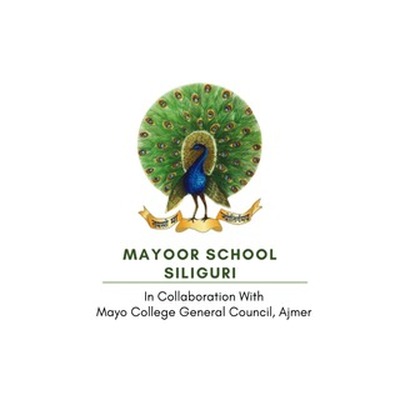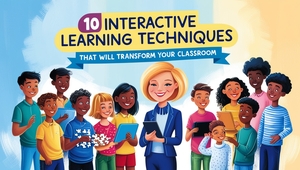10 Interactive Learning Techniques That Will Transform Your Classroom
Body
Are your students staring at the clock, waiting for class to end? Are you struggling to keep them engaged and motivated? Don’t worry – you're not alone! Many teachers face the same challenge of keeping students interested, especially with today’s tech-savvy generation. But here’s the good news: interactive learning techniques can transform your classroom into a lively, engaging, and fun environment that students actually look forward to.
In this post, we’ll explore 10 simple but powerful interactive learning techniques that will not only keep your students engaged but also boost their learning experience. Whether you're teaching math, history, or science, these strategies can work in any subject and are designed to improve participation and understanding.
Let’s dive into it!
What is Interactive Learning?
Before we jump into the techniques, let’s define interactive learning.
Interactive learning goes beyond traditional lecture-style teaching. It involves actively engaging students in the learning process through activities, discussions, and hands-on experiences. Instead of just absorbing information, students are participants in their learning journey.
Why is interactive learning important?
-
Increases retention: Active participation helps students remember and understand concepts better.
-
Boosts engagement: Students are more likely to stay focused when they’re involved in the lesson.
-
Promotes critical thinking: Interactive activities encourage problem-solving and creativity.
10 Interactive Learning Techniques That Will Transform Your Classroom
1. Gamify Your Lessons
Kids love games – and when you add learning into the mix, magic happens! Gamification is the use of game elements like points, badges, or leaderboards to make learning fun.
How to implement it:
-
Create quizzes with a point system. The student with the most points wins a small prize.
-
Turn lessons into a trivia game. Ask questions and give rewards for correct answers.
-
Use educational apps that incorporate gaming (Kahoot, Quizizz).
Why it works:
Games increase motivation and give students an immediate sense of accomplishment.
2. Peer Teaching and Learning
Let the students become the teacher! In peer teaching, students teach a concept to their classmates, which helps them understand the topic better and boosts their confidence.
How to do it:
-
Pair students up and let them take turns teaching each other.
-
Have students prepare a mini-presentation on a topic and present it to the class.
Key benefit:
This method builds communication skills and deepens understanding.
3. Flipped Classroom
The flipped classroom model turns traditional learning upside down. Instead of lecturing during class, students learn the material at home (through videos or readings) and use class time for discussions or activities.
How to implement it:
-
Assign short videos or readings as homework.
-
Use class time for group discussions or problem-solving activities.
Why it works:
Students come to class prepared, and you can focus on interactive learning instead of just lecturing.
4. Hands-on Projects
Students often learn best by doing. Hands-on projects allow them to apply what they've learned in a tangible way.
Examples:
-
Science experiments where students explore concepts firsthand.
-
Building models to demonstrate historical events or scientific principles.
-
Creative art projects that connect with lesson themes.
Benefit:
This technique makes abstract concepts more concrete and easier to understand.
5. Use Technology for Collaboration
Today’s students are digital natives, so why not use technology to your advantage? Collaborative tools like Google Docs or Microsoft Teams allow students to work together on projects in real-time, even outside the classroom.
Ideas to try:
-
Assign group research projects where students collaborate online.
-
Create shared presentations that everyone contributes to.
Bonus tip:
Use interactive whiteboards or apps like Nearpod to make lessons more engaging.
6. Interactive Polls and Surveys
Get instant feedback from your students by using live polls and surveys. This makes them feel heard and gives you valuable insights into their understanding.
Tools to use:
-
Try using apps like Poll Everywhere or Mentimeter to create real-time polls.
-
Ask for anonymous feedback on a lesson to see what worked and what didn’t.
Why it works:
Students enjoy seeing their responses displayed in real time, and it encourages participation.
7. Storytelling and Role-Playing
Bring lessons to life through storytelling and role-playing. These techniques work especially well in history, literature, and social studies but can be adapted for any subject.
How to implement:
-
Have students act out historical events or scenes from books.
-
Create scenarios where students need to solve a problem by taking on different roles.
Benefit:
This makes learning more immersive and memorable.
8. Group Work and Discussion Circles
Break your class into small groups for discussions or problem-solving tasks. This allows for more in-depth conversations and lets quieter students share their ideas in a smaller setting.
Tips:
-
Use discussion circles where each group focuses on a different topic.
-
Assign roles within each group (leader, note-taker, presenter) to ensure everyone participates.
Why it works:
Group work encourages teamwork, communication, and critical thinking.
9. Brain Breaks and Movement Activities
Sitting still for long periods can be tough, especially for younger students. Incorporate brain breaks or short movement activities to refresh their minds and boost focus.
Ideas:
-
Use quick stretches or dance breaks between lessons.
-
Try movement-based learning where students physically act out concepts.
Benefit:
Physical movement helps students reset and return to learning with renewed focus.
10. Interactive Learning Stations
Set up different learning stations around your classroom, each focusing on a specific topic or activity. Students can rotate through these stations, engaging with the material in various ways.
How to do it:
-
Create stations with puzzles, games, or mini-experiments related to your lesson.
-
Use task cards that challenge students to complete specific activities.
Why it works:
Stations allow students to learn at their own pace and engage in hands-on activities.
Key Takeaways
-
Interactive learning techniques keep students engaged, motivated, and actively participating in lessons.
-
Incorporating methods like gamification, peer teaching, and hands-on projects can transform your classroom into an exciting learning environment.
-
Use technology and collaborative tools to enhance group work and participation.
-
Movement breaks and learning stations help maintain student focus and make learning fun.
Frequently Asked Questions (FAQ)
Q: What is the benefit of interactive learning techniques?
Interactive learning helps increase student engagement, retention, and participation. It encourages students to take an active role in their learning, making lessons more memorable.
Q: How do I make my classroom more interactive?
Try incorporating methods like games, peer teaching, hands-on projects, and using technology. Focus on making lessons fun, engaging, and student-centered.
Q: How can I measure the effectiveness of interactive learning techniques?
Use feedback tools like polls, surveys, and student discussions to gauge engagement. You can also assess improvement in grades and participation levels.
Visit: Best CBSE School in Siliguri
Conclusion
Transforming your classroom with interactive learning techniques doesn’t have to be complicated. By using simple methods like gamification, peer teaching, and hands-on projects, you can create an engaging, fun learning environment that keeps students interested and motivated. Remember, the key to success is active participation – when students are involved, they’ll not only enjoy learning more, but they’ll also retain information better.
So, are you ready to transform your classroom? Start small, experiment with these techniques, and watch your students thrive!










Comments